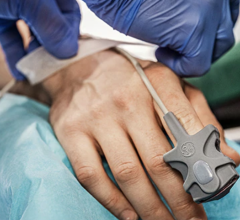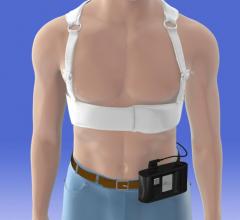
The key players in the U.S. defibrillator-monitor market are Physio-Control, Philips and Zoll. These systems offer much more robust capabilities than consumer-grade automatic external defibrillators (AEDs). Today’s defibrillator-monitors offer 12-lead electrocardiograms (ECGs), remote wireless transmission of these waveforms to hospitals ahead of a patient’s arrival, and additional vital signs data. The systems are designed for use by both emergency medical services (EMS) and hospital code-blue teams.
Among the biggest and most recent news in this market was the November 2011, $487 million sale of Physio-Control by its parent company. Medtronic sold its Physio-Control division to Bain Capital, a global private investment firm. Physio-Control President Brian Webster continues to lead the company and will be named chief executive officer when the final deal is closed in the first quarter of 2012.
Military Ruggedness
Military specifications are frequently used as a gold standard for the ruggedness of a product. In 2011, Philips received a $9.3 million order from the U.S. Air Force for its HeartStart MRx defibrillator-monitors. In the year prior to that, Philips received more than $20 million in orders for its systems from the Defense Logistics Agency (DLA) Troop Support Corporate Exigency Contract.
Philips said the systems will be used for aeromedical evacuation teams, ground medical and special operations forces. Philips said the HeartStart MRx meets military airworthy standards for rotary and fixed-wing aircraft, is portable, rugged and is compatible with the Philips IntelliVue monitoring systems used in military hospitals. In addition, the 12-lead transmission capability allows emergency care providers to send advanced notification to hospitals or receiving facilities. The early transmission helps hospitals and receiving facilities quickly mobilize appropriate staff and resources to treat the patient upon arrival.
The Zoll Propaq MD Monitor/Defibrillator received U.S. Food and Drug Administration (FDA) clearance in August 2010. It was specifically designed to meet the special needs of the military and air medical operations. It was developed as a joint project between the Department of Defense and a cooperative arrangement between Welch Allyn and Zoll Medical Corp. Development was facilitated with grants from the U.S. Army Medical Research and Development Command.
The Propaq MD is an ultra-lightweight, compact device with sophisticated capabilities that combine the proven features of the Welch Allyn Propaq monitors with the therapeutic capabilities of Zoll defibrillation and noninvasive pacing technologies. Zoll says the system is 60 percent smaller and 40 percent lighter than similar defibrillator-monitors. It is two pounds lighter than the current military vital signs monitor, the Propaq 206, even with defibrillation and pacing added.
The device provides a combination of capabilities that include a large, high-contrast color LCD display capable of viewing up to four waveforms simultaneously, as well as a full 12-lead electrocardiogram ECG for on-screen review. It also offers a unique night vision goggle (NVG) mode for military and air medical nighttime operation. All physiological monitoring parameter values – including heart rate, SpO2, ETCO2, respiration, noninvasive blood pressure, two temperatures, and three invasive pressures – are shown in large color-coded numeric formats. The device is capable of monitoring adult, pediatric and neonatal patients. Alarms are provided for all parameters. The Propaq MD also provides monitoring of three invasive pressures necessary for treating critical patients during long transports.
A new battery system and AC power charger provide worldwide land, sea and air operating capability. The system can monitor all physiological parameters, including three invasive pressures and two temperature channels, for more than six hours on a single battery charge.
Zoll is developing the companion Propaq M, a monitor-only version of Propaq MD. It will have an identical interface for operation, batteries, power supplies, blood pressure cuffs, accessories, data and cables, but without therapeutic defibrillation and pacing capability.
Remote, Pre-Hospital ECG Transmission
With the goal of lowering door-to-balloon times, many hospitals have established STEMI networks so EMS can use Web-based, wireless technology to send pre-hospital electrocardiograms (ECG) from the field to the hospital. This allows a physician to review the ECG to confirm an ST-elevated myocardial infarction (STEMI) case so the cath lab can be activated prior to the patient’s arrival.
Zoll, Philips and Physio-Control all offer Web-based platforms designed to share pre-hospital 12-lead ECGs sent from their defibrillator-monitors. Originally, each system only interfaced with the specific vendor’s defibrillator-monitors, but over the past two years some companies developed vendor-neutral platforms.
For example, Physio-Control altered its LifeNet remote access system so it now connects 12-lead devices from various manufacturers via the Lifenet Adapter. This overcomes the issue many hospitals face when creating a pre-hospital ECG system: numerous EMS organizations that bring patients to a hospital may use defibrillator-monitors from several vendors. This type of interface allows hospitals to standardize the management of chest pain cases regardless of the monitoring equipment used by EMS in the field.
Physio-Control enhanced its remote transmission network in 2011 by partnering with AirStrip to enable dynamic ECG waveforms (instead of static JPG images) to be accessed anywhere using an iPhone or iPad. The software allows zooming in on waveforms, which does not affect visual clarity. Clinicians can view current data and historical tests conducted up to one year ago, in 10-second increments.
New Technology
A new version of the Physio-Control Lifepak 15 defibrillator-monitor was released in 2011, offering use of external AC/DC power sources, continuous temperature monitoring for therapeutic hypothermia, continuous waveform capture and storage from all three channels (ECG, SpO2, CO2), and automated self-reporting capabilities.
In late 2011, Philips introduced the HeartStart FR3 AED in the United States for professional responders who treat victims of sudden cardiac arrest (SCA). The system is Philips’ most advanced professional-grade AED, which offers a step-down from a full defibrillator-monitor but more advanced capabilities than a consumer-grade AED. The FR3 requires a prescription and must be used under medical direction.
The FR3 automatically powers on when its carrying case is opened. The device also features easy-to-access, pre-connected peel-and-place pads that do not require opening a foil pouch. These unique features help speed therapy delivery.
The HeartStart FR3 includes several innovations: a bright, high-resolution color LCD that provides visible prompts for easier use in noisy environments; a CPR metronome that keeps the beat for consistent chest compressions; and bilingual configurability so that voice and text prompts can be clearly understood by a variety of responders.
Comparison Chart
This story was an introduction to a comparison chart of defibrillator-monitors. To access the chart, click on the comparison chart link at the top of the page. Participants include Philips Healthcare (www.healthcare.philips.com), Physio-Control (www.physio-control.com) and Zoll Medical (www.zoll.com).


 July 28, 2023
July 28, 2023 









